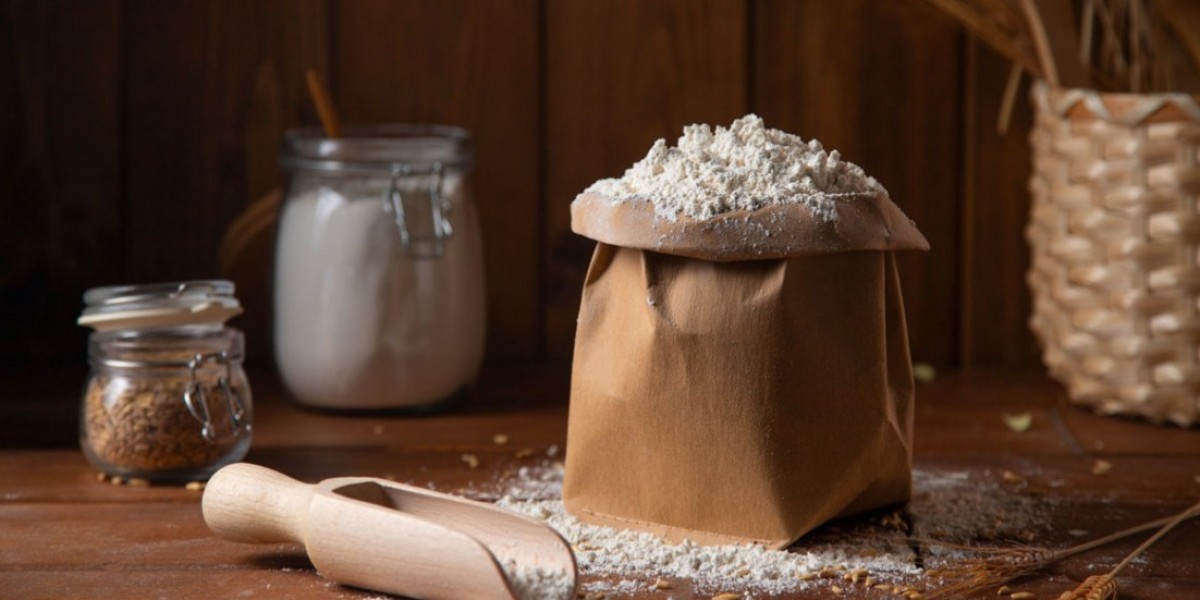The journey of atta, from the wheat fields to your kitchen, is a fascinating process that involves numerous steps and meticulous care. This blog will take you through this journey, highlighting what makes the best atta and how to choose the best atta in India for your culinary needs.
## Understanding Atta: What Is It?
Atta is a type of whole wheat flour, distinguished by its fine texture and high gluten content. Unlike refined flours, atta includes the bran, germ, and endosperm of the wheat kernel, making it more nutritious. This whole wheat flour is a cornerstone of Indian cuisine, providing essential nutrients and serving as the base for many beloved dishes.
### Nutritional Benefits of Atta
Atta is rich in dietary fiber, vitamins, and minerals. It contains complex carbohydrates that provide sustained energy, making it a healthier option compared to refined flours. The fiber content aids in digestion and helps maintain healthy blood sugar levels, while the vitamins and minerals contribute to overall well-being.
## From Field to Mill: The Production Process
### Cultivation of Wheat
The journey of atta begins in the wheat fields. Wheat is a staple crop in India, grown extensively in states like Punjab, Haryana, and Uttar Pradesh. The cultivation process involves selecting the right variety of wheat, preparing the soil, and sowing the seeds. Farmers pay close attention to irrigation, fertilization, and pest control to ensure a healthy crop.
### Harvesting and Threshing
Once the wheat reaches maturity, it's time for harvesting. Farmers use combines or traditional methods to cut the wheat stalks. The harvested wheat is then threshed to separate the grain from the chaff. This process is crucial to ensure that only the clean, whole grains are sent to the mill.
### Cleaning and Milling
At the mill, the wheat grains undergo a thorough cleaning process to remove any impurities. The grains are then ground in a series of steps to produce fine whole wheat flour. This milling process is crucial in determining the quality of atta. The best atta in India is produced by mills that use advanced technology to ensure a consistent, fine texture without losing the nutritional benefits of the whole wheat.
## Quality Check: What Makes the Best Atta?
### Texture and Consistency
The best atta should have a fine, consistent texture. This ensures that the dough made from it is smooth and pliable, making it easier to roll out perfect chapatis and other flatbreads. The texture is a direct result of the milling process, where the grains are finely ground without losing the bran and germ.
### Nutritional Content
High-quality atta retains the bran and germ, making it rich in fiber and nutrients. The best atta in India is made from high-quality wheat grains that are minimally processed to preserve their natural goodness. Checking the nutritional information on the packaging can help you choose atta that is high in dietary fiber, protein, and essential vitamins and minerals.
### Purity and Freshness
Purity and freshness are key indicators of good quality atta. The best atta should be free from any additives, preservatives, or adulterants. Fresh atta has a pleasant, slightly nutty aroma and a light brown color, indicating that it has been recently milled.
## Choosing the Best Atta in India
### Popular Brands
India boasts several well-known brands that produce high-quality atta. Some of the most popular brands include Aashirvaad, Pillsbury, and Annapurna. These brands have established a reputation for quality and consistency, making them a reliable choice for consumers.
### Organic and Local Options
In addition to the popular brands, there is a growing demand for organic atta. Organic atta is made from wheat grown without the use of synthetic pesticides or fertilizers. Local mills and organic stores often offer fresh, locally sourced atta, which can be a great choice for those looking to support sustainable and environmentally friendly farming practices.
### Reading Labels
When choosing atta, it's important to read the labels carefully. Look for atta that is 100% whole wheat with no added ingredients. The nutritional information can also provide insights into the quality of the flour. Higher fiber content indicates that the atta retains more of the wheat bran, which is beneficial for health.
## The Culinary Journey: From Atta to Delicious Dishes
### Making the Perfect Dough
The first step in using atta is to make the dough. Start by sifting the atta to remove any lumps. Mix it with water and a pinch of salt to form a soft, pliable dough. Knead the dough well to activate the gluten, which will give your chapatis a nice, chewy texture. Let the dough rest for at least 15-20 minutes before rolling it out.
### Chapatis: The Everyday Bread
Chapatis, or rotis, are the most common use of atta in Indian kitchens. Roll out small balls of dough into thin, round discs and cook them on a hot tava (griddle). The key to soft, puffed chapatis is to cook them quickly on high heat and then finish them off directly on the flame to puff them up.
### Parathas and Puries: Variations on a Theme
Parathas are another popular use of atta. These are thicker, layered flatbreads that can be plain or stuffed with various fillings like potatoes, paneer, or vegetables. To make parathas, roll out the dough, fold it with a layer of ghee or oil, and then roll it out again before cooking.
Puris are deep-fried bread made from atta. The dough for puris is usually stiffer than for chapatis. Roll out small discs and fry them in hot oil until they puff up and turn golden brown. Puris are often enjoyed with curries, bhaji, or as part of festive meals.
### Atta in Sweets and Snacks
Atta is also used to make a variety of sweets and snacks. Traditional Indian sweets like atta halwa and laddoos are made by roasting atta with ghee and sugar. Atta is also used in making savory snacks like mathri and sev.
## Conclusion: Embracing the Best Atta in Your Kitchen
The journey of atta from the field to your kitchen is a testament to the hard work and dedication of farmers and millers. By choosing the best atta, you not only ensure the health and well-being of your family but also support sustainable agricultural practices.
In India, where food is an integral part of culture and tradition, the quality of ingredients matters immensely. The best atta in India is not just about taste and texture but also about the nutritional benefits and purity. By paying attention to the sourcing, milling process, and quality checks, you can make an informed choice and enjoy the rich, wholesome goodness of atta in your daily meals.
Whether it's the soft, warm chapatis that accompany your meals or the indulgent sweets made during festivals, atta plays a crucial role in bringing the flavors of India to your table. Embrace the journey of atta, appreciate its significance, and savor the delicious dishes that come from this humble yet essential flour.








